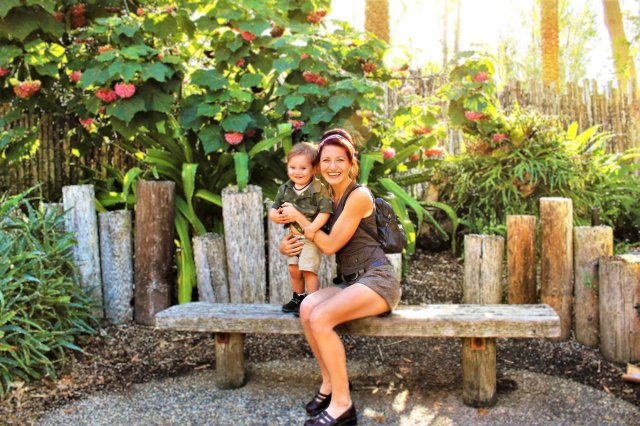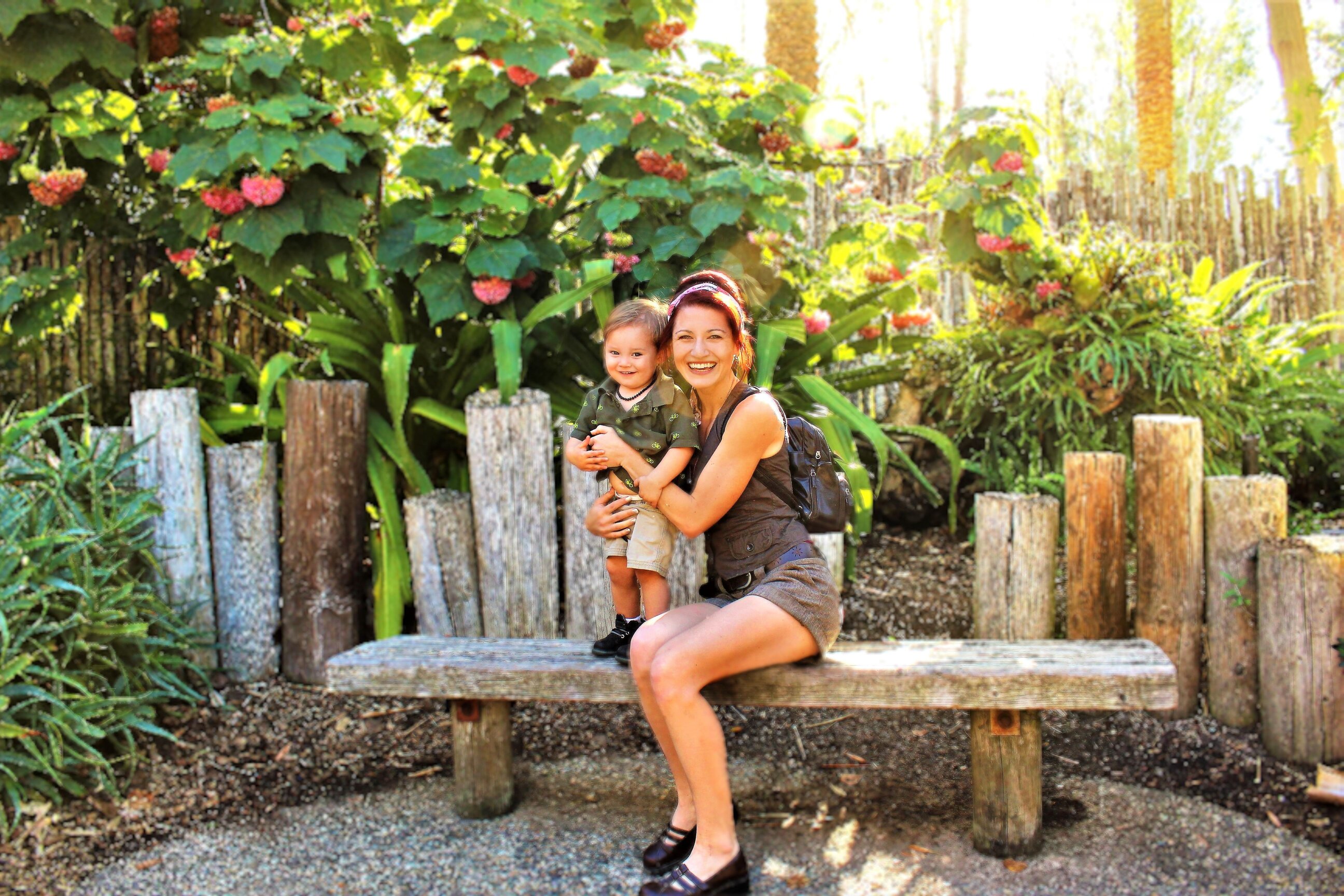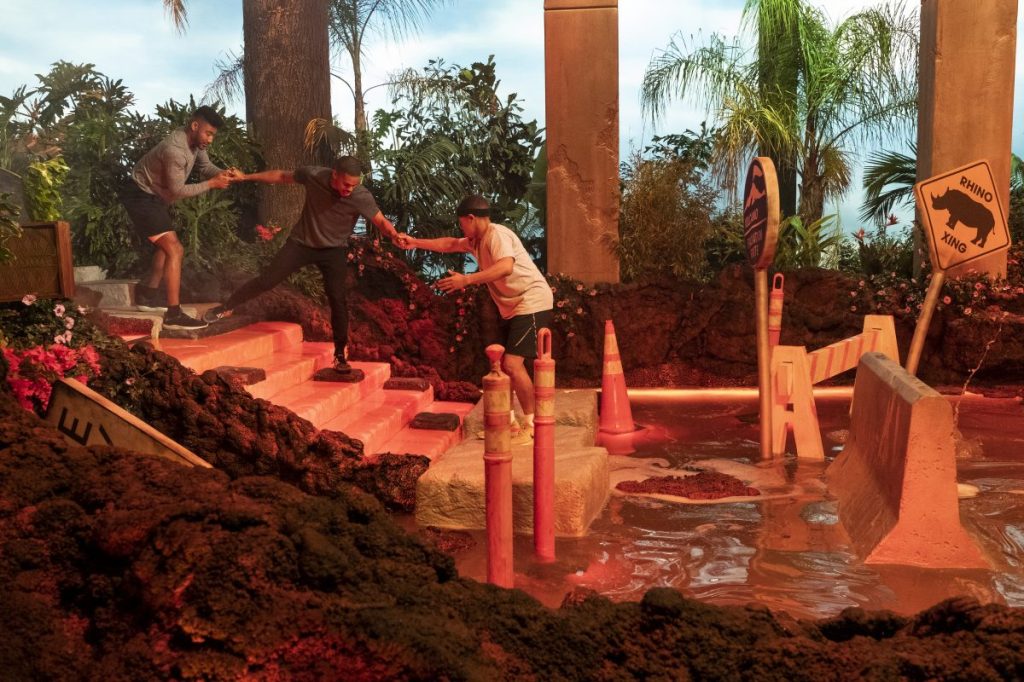If your little ones are swinging from the rafters these days, going to the park might not be enough to burn off all that energy. Check out these obstacle and rope courses around DC, where your wild adventurers can get their wiggles out in the air or on the ground. Whether they’re traipsing on bridges, swinging free through the air, or climbing walls (literally!), these courses have something for everyone and plenty of adrenaline to go around.
Adventure Park USA
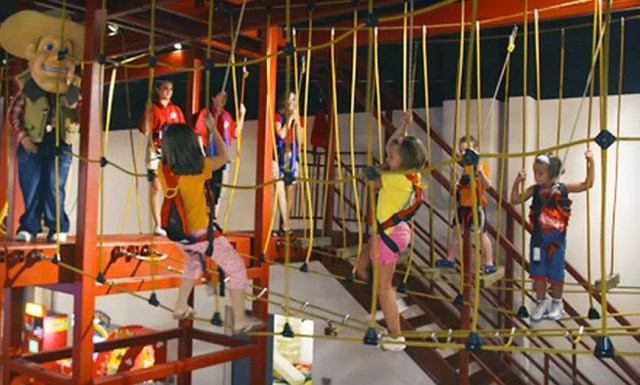
Make it a full day of adventure by heading to Adventure Park USA’s Hang ‘Em High Ropes Course. Hang out 13 feet above the ground to navigate this fun and challenging mid-air adventure perfect for anyone at least 40-inches tall. After you’ve had your fill of aerial adventures, take off your safety harness and enjoy some of their other adventures, like the go-karts or the rock wall.
Cost: $8 for the ropes course only; $25-100 for a fun pass that gives you the rope course and other adventures
Where: 11113 W. Baldwin Rd, Monrovia, MD
Online: adventureparkusa.com
The St. James
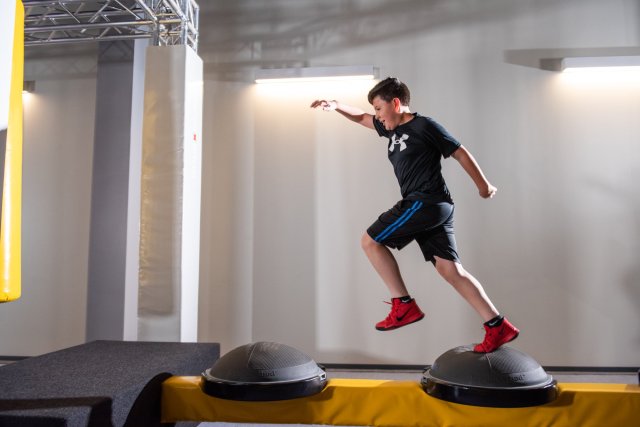
This Springfield-based gym has a health club with fitness classes, racquetball courts, indoor sports fields and courts, ice rinks, an Olympic-size pool, a water park – and so on. But this is focusing on obstacle courses, so we’ll put on blinders here and head straight for the 30,000-square-foot area that has trampolines, a Nerf battle zone, a ropes course, colorful climbing structures and, of course, a Ninja Warrior Course. The biggest challenge may be tearing yourself away.
Cost: $13/one hour for nonmembers, $23/two hours
Where: 6805 Industrial Rd., Springfield, VA
Online: superawesomeandamazing.com
Summit Ropes
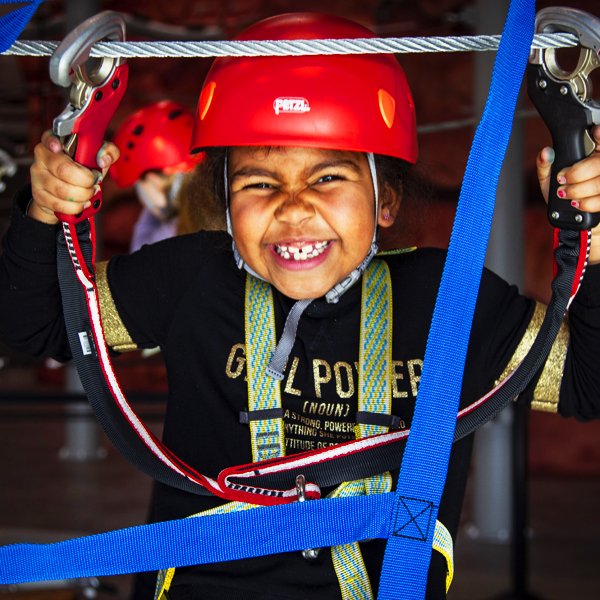
The largest indoor ropes course in the United States boasts 16,550 square feet of courses split into a Kids Course for ages 4-9 and the Main Course for ages 7 & up. Guests wear a full-body harness and use a smart belay system so climbers can go it alone or with a partner. The course uses via ferrata, a steel cable that runs along the route and is attached to the rock every 3.3-32.8 feet.
Insider tip: Reservations are required at this time. If you make a reservation and are a no-show, you will be charged the full amount for the booking.
Cost: Ages 7 & up - $29.50 (1hr), $48 (2hr)
Ages 4-6 (combo with adult) - $47 (1hr), $65 (2hr)
Where: 44810 Old Ox Rd., Sterling, VA
Online: summitropes.com
SkyZone
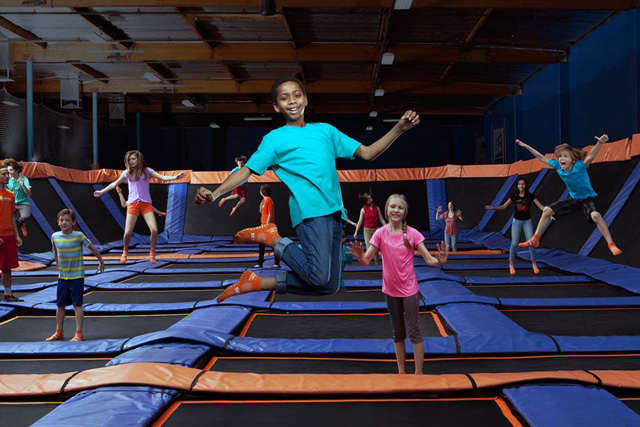
Children and adults can test their skills on a variety of equipment, such as the Ninja Warrior Course (open to ages 6 and up), which tests balance, strength and speed; rock walls, warp walls of varying height and difficulty; trampolines (open to anyone who can walk); and dodgeball. A main attraction is the Ropes Course (for anyone 48 inches and taller), which is suspended above the facility’s floor and requires a harness to use. Check the website for special events like Glow ($25/person ages 6 and up) on Friday and Saturday from 8-11 p.m. and Toddler Time ($10/child 5 and younger) on Tuesday-Thursday, 9:30-11 a.m.
Cost: Prices vary by location
Where: 21070 Southbank St. Sterling, VA; 5325 Port Royal Rd., Springfield, VA; 7807 Sudley Rd., Manassas, VA; 15813 Gaither Dr., Gaithersburg, MD
Online: skyzone.com
ZavaZone
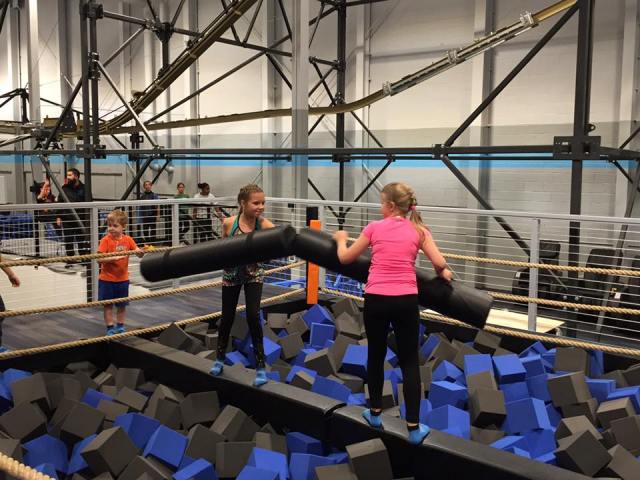
With three adventure zones to choose from, there’s something for every goal, whether it’s scaling a warp wall, reaching new heights on a giant trampoline, winning a balance battle or swinging through the challenges of the high ropes course set about 20 feet off the floor. And if you’re tired from all that obstacle-crushing, take the 40-foot zip line from one high platform to another. The height requirement for the high ropes course and zip line is 52 inches, and the overall age recommendation is at least 5 years.
Cost: $19.50/one-hour ticket to $34/two-hour ticket
Where: 40 Southlawn Ct., Rockville, MD (reopening June 11, 2021); 45685 Oakbrook Ct., Sterling, VA
Online: zavazone.com
NOVA Ninja
Situated at CrossFit Loudoun, which is owned by a former “American Ninja Warrior” contestant, this gym has classes and drop-ins to suit every schedule. New is a weekly Family Ninja Night on Saturdays from 6:15-7:15 p.m. ($20/family). Youth programs are available for children as young as 5. The Ninja 101 class takes kids through seven obstacles, including rope swings, balance tanks and a ring row.
Cost: Contact for pricing
Where: 21531 Blackwood Ct., Sterling, VA
Online: novaninja.com
Go Ape!
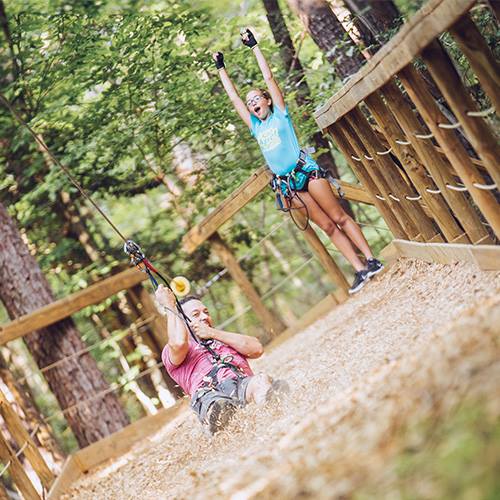
When the kids start bouncing off the walls, it may be time to take to the trees. These obstacle courses in Springfield and Rockville take climbers to new heights. The Go Ape Treetop Journey is a good way to whet your appetite for high-ropes courses. During the hourlong trek, you’ll conquer 20 obstacles and two zip lines. For the more daring – and slightly older set – try Go Ape Treetop Adventure, which takes two-three hours to complete and sits higher in the tree canopy. The minimum height for either is 4 feet 7 inches. Note that these are open seasonally. Both locations reopen March 28.
Insider tip: They’ve discontinued the use of cash and only accept card payments due to Covid.
Cost: $37.95/ages (1hr); $64.95/16 & up or $54.95/15 & under (3hr)
Where: 7550 Reservation Dr., Springfield, VA; 6129 Needwood Lake Dr., Derwood, MD
Online: goape.com
Terrapin Adventures
With several options to choose from, it’s pretty tough to not find something challenging – in a good way. The ultimate is the Terrapin Challenge (open to kiddos 8 & up who are at least 4 feet tall and 70 pounds). It covers all 34 obstacles, including the Zip Line, Giant Swing, 43-foot Climbing Tower, Terrapin Flier and High Ropes Challenge Course. Or tackle just one or two of those. The 450-foot Zip Line starts 30 feet above ground and riders can reach speeds of 20 mph as they sail down. Take a ride on the Giant Swing – after you scale a 4-foot-high scaffolding. The company’s patented winch system pulls guests back and up almost 40 feet in the air before they release the swing and enjoy 2 G’s of force as they swing back and forth. The Climbing Tower – a rock wall – has 12 routes to the top with varying degrees of difficulty. Ever want to free fall 40 feet? You can here – safely. And no obstacle course would be complete without a high ropes course. This one has 18 challenges and reaches 40 feet into the treetops. Cost: $69/person for the High Ropes Course, Climbing Tower and Giant Swing; $29/person for the Giant Swing and Zip Line; $29/person for the Kid’s for Terrapin Explorer Ropes Course Where: 8600 Foundry St., Savage, MD Online: terrapinadventures.com
Adventure Park at Sandy Spring Friends School
Open to ages 5 & up, this location offers 13 aerial forest trails of varying difficulty. Each has a zip line but they primarily have bridges between tree platforms made of rope, cable and wood. It’s possible to create 190 unique challenges, although there are restrictions on which trails the youngest climbers can tackle.
Cost: Mon.-Fri.: $60/ages 12-adult, $50/ages 7-11, $16/ages 5-6; Sat. & Sun: $64/ages 12-adult, $54/ages 7-11, $20/ages 5-6
Where: 16701 Norwood Rd., Sandy Spring, MD
Online: sandyspringadventurepark.org
—Wendy Miller, Meghan Yudes Meyers and Stephanie Kanowitz
RELATED STORIES:
16 Indoor Play Spaces for All-Weather Fun
Make a Splash (Rain or Shine): DC’s Best Indoor Pools
Wheel Adventures: Where to Skate, Scoot & Ride Indoors





